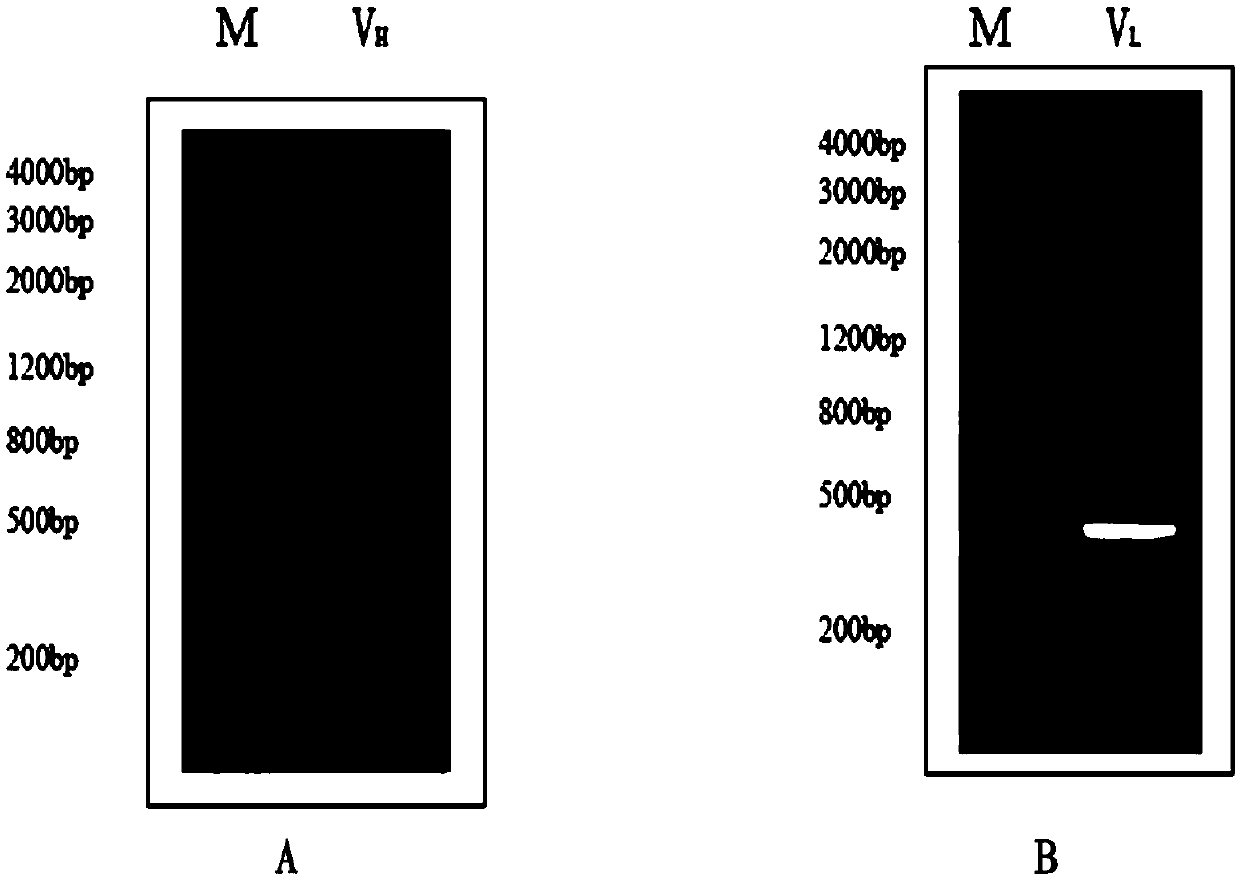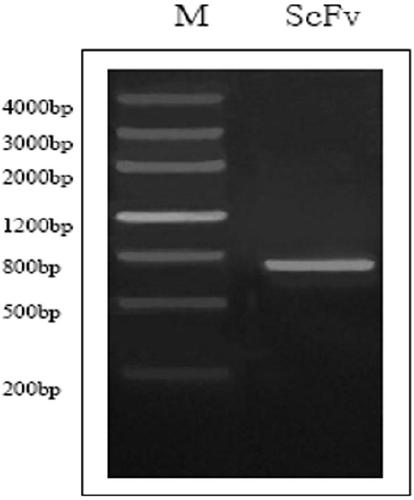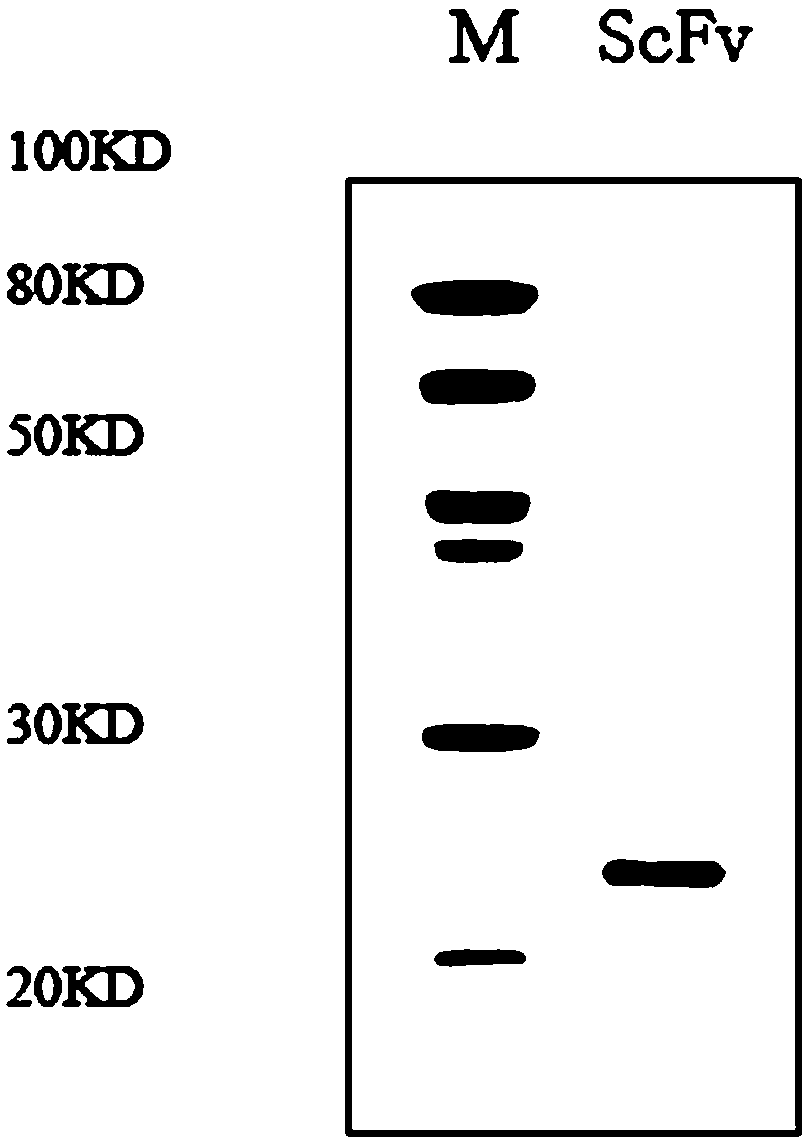Single-chain antibody of human source anti-alexin C3d molecules and application thereof
A single-chain antibody and anti-complement technology, which is applied in the field of peptides, can solve the problems of limitations, difficulty in obtaining highly specific anti-C3d antibodies, and difficulty in reaching the lesion tissue in the spatial conformation of antibody molecules, so as to achieve good therapeutic effect and excellent anti-adhesion/anti-complement Inflammation targeting inhibitory effect, crescent/necrosis improvement effect
- Summary
- Abstract
- Description
- Claims
- Application Information
AI Technical Summary
Problems solved by technology
Method used
Image
Examples
Embodiment 1
[0031] Embodiment 1, preparation of anti-C3d single chain antibody
[0032] Use the following method to screen anti-C3d single-chain antibody, and the specific method includes the following steps:
[0033] 1.1 Preparation of cDNA
[0034] 20 ml of peripheral blood from 50 healthy individuals were collected, and mononuclear cells were separated with lymphocyte separation medium (Tianjin Blood Research Institute). Total RNA was extracted from isolated human peripheral blood lymphocytes with Trizol reagent (Invitrogen), and then mixed in the same ratio. The cDNA was reverse transcribed using a cDNA reverse transcription kit (Takara Company). The above steps were carried out according to the instructions provided by the manufacturer.
[0035] 1.2 Amplification of antibody light chain and heavy chain variable region genes: Using PCR method, using the cDNA synthesized by reverse transcription as a template, add primers for amplifying the light chain and heavy chain variable regio...
Embodiment 2
[0056] Embodiment 2, ELISA detection antibody binding activity
[0057] ScFv affinity was detected by non-competitive enzyme immunoassay. Specific steps: coat the ELISA plate according to the concentration of 2, 1, 0.5, 0.25 μg / ml C3d, add 2-fold serial dilution of ScFv, the secondary antibody is HRP / anti-ScFv antibody, after the color development is terminated, the microplate reader measures at 450nm single wavelength Optical density value (D). The Curve Expert 1.4 software was used to calculate the corresponding antibody concentration when the D value reached 1 / 2D under different antigen dilutions based on the D value and the antibody concentration [Ab]. According to the formula: Ka=(n-1) / 2×(n[Ab']-[Ab]), where [Ab'] and [Ab] represent two different concentrations of [Ag'] and [Ag'] and Under [Ag], the corresponding antibody concentration when the D value reaches 1 / 2D, n represents the dilution factor between the antigen [Ag'] and [Ag]. The result is: ScFv affinity consta...
Embodiment 3
[0058] Example 3. Biodistribution experiment of anti-C3d single chain antibody
[0059] Anti-C3d single-chain antibody ScFv was labeled by lodogen method 125 I. In the EP tube coated with 200 μg lodogen, add 150 μl of 50 mmLo / L PBS (pH7.4) prepared now, 100 μl (100 μg) of ScFv dissolved in 1 mg BSA), Na 125 I solution 15μl (185MBq), at room temperature, shake the marked tube intermittently for 15min. The SEP-PAK C18 column was washed with 5 mL each of methanol, double distilled water and 0.1% trifluoroacetic acid (TFA) to activate it; the labeled mixture was put on the column and washed with 0.1% TFA; 1.5 mL of eluent. After freeze-drying, it was diluted with PBS solution containing 1 mg / mL BSA, aliquoted, and stored in a -80°C refrigerator for later use. Male DBA / 1J mice were subcutaneously injected with 0.1mL collagen II and complete Freund's adjuvant (both purchased from Sigma, USA) at the base of the tail, and boosted once on the 21st day to establish a mouse model of r...
PUM
 Login to View More
Login to View More Abstract
Description
Claims
Application Information
 Login to View More
Login to View More - R&D
- Intellectual Property
- Life Sciences
- Materials
- Tech Scout
- Unparalleled Data Quality
- Higher Quality Content
- 60% Fewer Hallucinations
Browse by: Latest US Patents, China's latest patents, Technical Efficacy Thesaurus, Application Domain, Technology Topic, Popular Technical Reports.
© 2025 PatSnap. All rights reserved.Legal|Privacy policy|Modern Slavery Act Transparency Statement|Sitemap|About US| Contact US: help@patsnap.com



